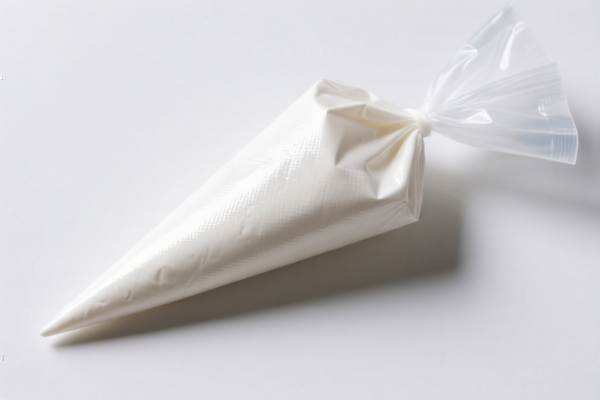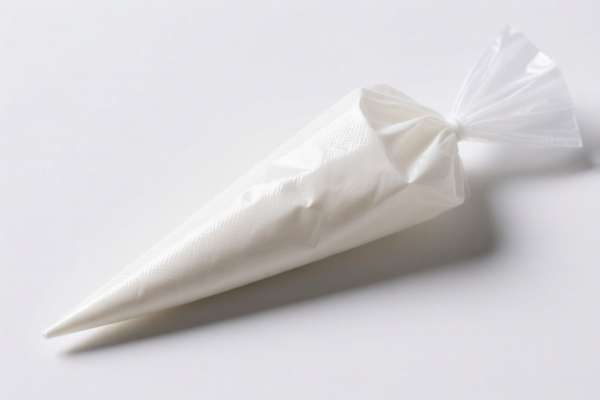| HS Code | Official Doc | Tariff Rate | Origin | Destination | Effective Date |
|---|---|---|---|---|---|
| 3923210080 | Doc | 58.0% | CN | US | 2025-05-12 |
| 4823901000 | Doc | 55.0% | CN | US | 2025-05-12 |




Declaration Analysis: Disposable Piping Bags – HS Code & Tariff Breakdown
This analysis details the HS codes provided for your declared “Disposable Piping Bags”, outlining the classification, tariff implications, and key considerations for import.
Understanding HS Codes:
The Harmonized System (HS) Code is a globally standardized system of names and numbers to classify traded products. It’s crucial for accurate tariff calculation and customs clearance. Let's break down each code provided:
1. HS Code: 3923.21.00.80 – Plastics Sacks and Bags (Including Cones)
- 39: Plastics and articles thereof. This chapter covers all products made of plastic.
- 23: Plastics packing materials, including goods of plastics for the conveyance or packing of goods. This narrows down the category to packaging specifically.
- 21: Sacks and bags (including cones). This specifies the type of plastic packing material.
- 00: Further specifies the product.
- 80: Other: With no single side exceeding 75 mm in length. This indicates a specific dimension characteristic of the bags.
Tariff Details:
- Basic Duty: 3.0%
- Additional Tariff: 25.0% (Currently)
- Additional Tariff (Post April 2, 2025): 30.0%
- Total Tariff: 58.0%
Key Considerations:
- Material Composition: Confirm the exact polymer composition of the bags. "Polymers of ethylene" is broad. Specific types of polyethylene (LDPE, HDPE, etc.) might have slightly different implications, though generally fall under this code.
- Dimensions: Ensure the bags actually meet the dimension requirement (no single side exceeding 75mm). Incorrect classification due to dimensions can lead to penalties.
- End Use: While generally accepted for piping bags, confirm the intended use is solely for conveyance or packing.
2. HS Code: 4823.90.10.00 – Other Paper Pulp Articles
- 48: Paper and paperboard; articles of paper pulp, paperboard or cellulose wadding. This chapter covers products made from paper.
- 23: Other paper, paperboard, cellulose wadding and webs of cellulose fibers, cut to size or shape; other articles of paper pulp, paper, paperboard, cellulose wadding or webs of cellulose fibers. This narrows down the category to specific paper articles.
- 90: Other: Of paper pulp. This specifies the material composition.
- 10: Further specifies the product.
- 00: Further specifies the product.
Tariff Details:
- Basic Duty: 0.0%
- Additional Tariff: 25.0% (Currently)
- Additional Tariff (Post April 2, 2025): 30.0%
- Total Tariff: 55.0%
Key Considerations:
- Material Purity: Confirm the bags are exclusively made of paper pulp. Any blending with other materials (plastic coatings, etc.) could change the HS code.
- Paper Type: The type of paper pulp used (e.g., recycled, virgin) generally doesn't affect the HS code, but documentation might be requested.
- Strength & Weight: The intended strength and weight capacity of the bags should be documented.
Important Reminders:
- Accuracy is Crucial: Double-check the material composition and dimensions of your products against the HS code descriptions.
- Documentation: Maintain detailed records of your product specifications, including material composition, dimensions, and intended use.
- Tariff Changes: Be aware of the upcoming tariff changes on April 2, 2025.
- Consultation: If you are unsure about the correct HS code for your products, it is always best to consult with a customs broker or import specialist.
Disclaimer: This analysis is based on the information provided and is for general guidance only. Customs regulations are subject to change, and the final determination of the correct HS code rests with the customs authorities.
Customer Reviews
The HS Code explanation is okay, but it felt a little too focused on plastics. I was looking for more information on paper pulp options. The 'Important Reminders' section is a solid addition though, good to see that.
I was confused about the correct code for my piping bags, and this site made it so much easier! The 58.0% tariff rate for 3923210080 is good to know upfront. Saved me a lot of research time.
The information on HS Code 4823.90.10.00 was pretty useful. I wish there was a little more clarity on documentation requirements for paper type, but overall a good resource for disposable piping bag classification.
Really helpful breakdown of the HS Code 3923.21.00.80 for plastic sacks and bags. The detail on the dimensions and the upcoming tariff changes for April 2, 2025, is exactly what I needed for our import planning.